Ask Ethan #96: Is the Multiverse science?
There are three things an idea must do to become a full-fledged scientific theory. How does the Multiverse stack up?
“It’s hard to build models of inflation that don’t lead to a multiverse. It’s not impossible, so I think there’s still certainly research that needs to be done. But most models of inflation do lead to a multiverse, and evidence for inflation will be pushing us in the direction of taking [the idea of a] multiverse seriously.” –Alan Guth
Every once in a while, I get a question or suggestion for Ask Ethan that probes at the very limits of what we can perceive, theorize or imagine. Questions about the beginning or end of the Universe, of the laws of nature as we know them, or even of science itself. This week’s selection comes courtesy of John Pashkow, who asks:
“You wrote that there are 3 things that go into a revolutionary scientific theory, the 3rd being that it needs to be testable and able to be confirmed or refuted (what the philosopher Karl Popper called “falsifiability”), and yet the theory of the multiverse does not seem to meet that test.”
So let’s talk about it all: the three criteria, the multiverse and where it comes from, and whether it meets the high standard required to be its own scientific theory.

Last week, I wrote out the three components of any revolutionary new scientific theory. Here’s what I said they were:
1.) It has to reproduce all the successes of the previously existing theory.
2.) It has to explain the new results that contradicted the old theory.
3.) It needs to make new, testable predictions that have not been tested before, and that can either be confirmed and validated or refuted.
This has been how scientific advances have occurred in virtually all fields, from “simple” ones like physics to “complex” ones like biology.
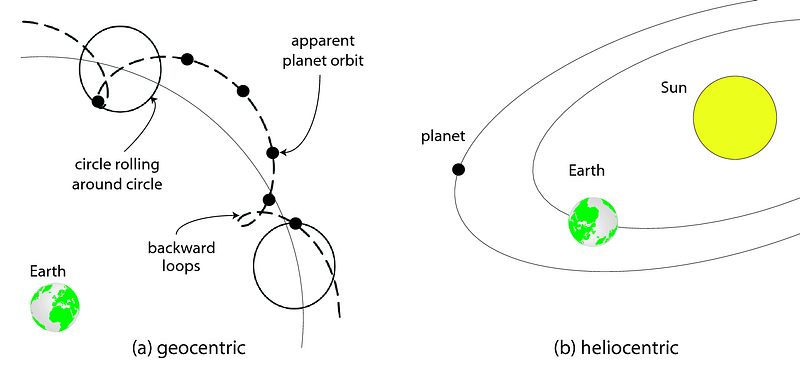
The descriptive geocentrism — with epicycles, equants and deferents — was replaced with Kepler’s heliocentrism and elliptical orbits, expanded upon later by Newton’s gravity. Not only were the positions and motions of the planets explained, but so were Jupiter’s moons, Venus’ phases, Mars’ eccentric orbit, and new predictions were made about the periodicity and return of comets.
Hundreds of year later, Newton’s gravity itself failed to predict the detailed orbital characteristics of Mercury, and it was Einstein’s General Relativity that not only reproduced all of Newton’s successes, but explained Mercury’s orbital anomalies and made predictions about the bending of starlight by gravitational sources that could be tested. Within only a few short years, General Relativity was confirmed, and we had another full-fledged scientific revolution on our hands.

(For the biologists out there, Darwin’s theory of evolution was a great example, superseded by genetics and then further superseded by the discovery of DNA. Science marches forward in this fashion: not by invalidating what came before it, but by expanding upon it to better describe the full suite of applicable phenomena in the Universe.)
So where does the Multiverse — the real Multiverse — come from, and what is it? To understand that, let’s start with our picture of the Universe itself. And by Universe, I mean the observable Universe: the sum total of everything we can see, measure, and interact with.
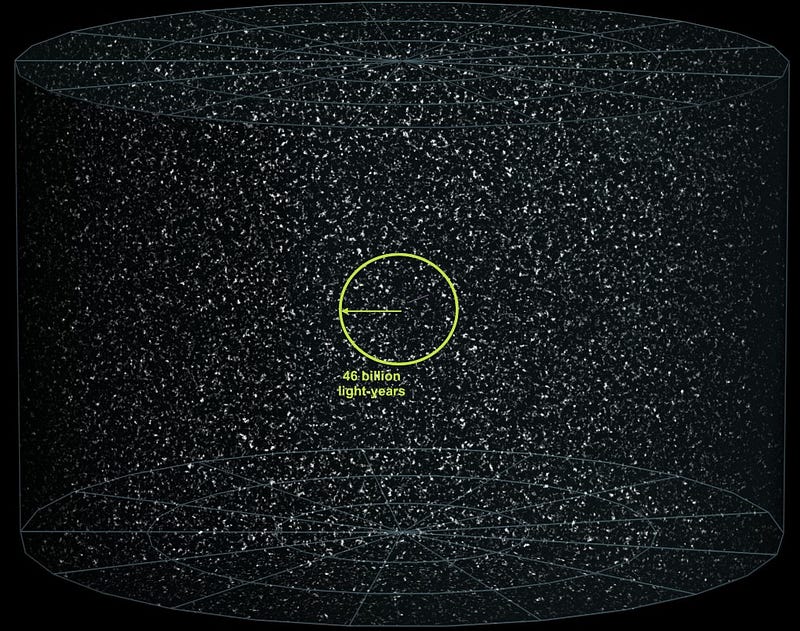
Everywhere we look in the sky, we see stars and galaxies, clustered together in a great cosmic web. But the farther away in space we look, the farther back in time we look as well. The more distant galaxies are younger, and hence less evolved. Their stars have fewer heavy elements in them, they appear smaller as fewer mergers have happened, there are more spirals and fewer ellipticals (which take time to form from mergers), and so on. If we go all the way to the limits of what we can see, we find the very earliest stars in the Universe, and then a region of darkness beyond that, where the only light is the leftover glow from the Big Bang.
But the Big Bang itself — occurring everywhere at once some 13.8 billion years ago — wasn’t the start of space and time, but rather the start of our observable Universe. Before that, there was an epoch known as cosmic inflation, where space itself expanded exponentially, full of energy inherent to the fabric of spacetime.
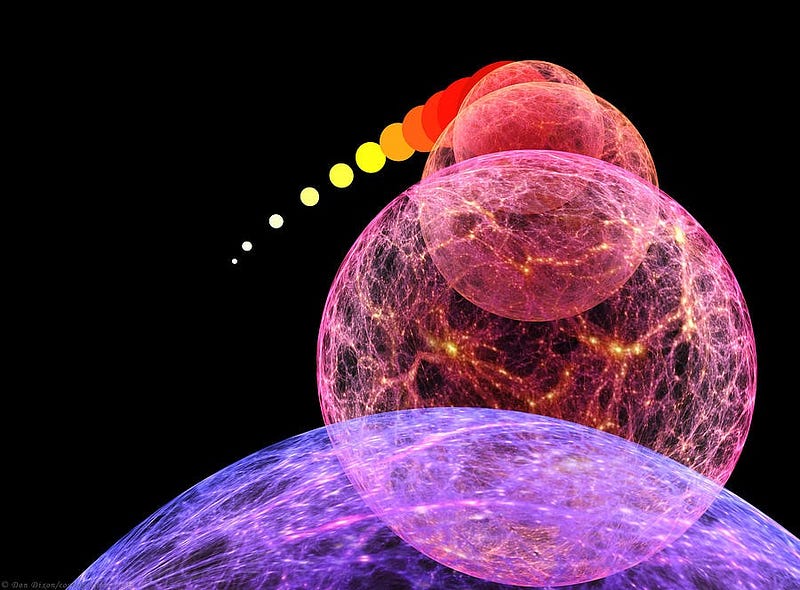
Cosmic inflation is itself an example of a theory that came along and superseded the one that came before it, in that it:
1.) Was consistent with all the successes of the Big Bang and encompassed all of modern cosmology,
2.) Explained a number of problems that the Big Bang couldn’t address, including why the Universe was the same temperature everywhere, why it was so spatially flat, and why there were no leftover high-energy relics like magnetic monopoles, and
3.) Made five distinct new predictions that could be tested observationally, four of which have been confirmed.
There’s also, however, one consequence that inflation predicts that we do not know whether we can confirm or not: the Multiverse.
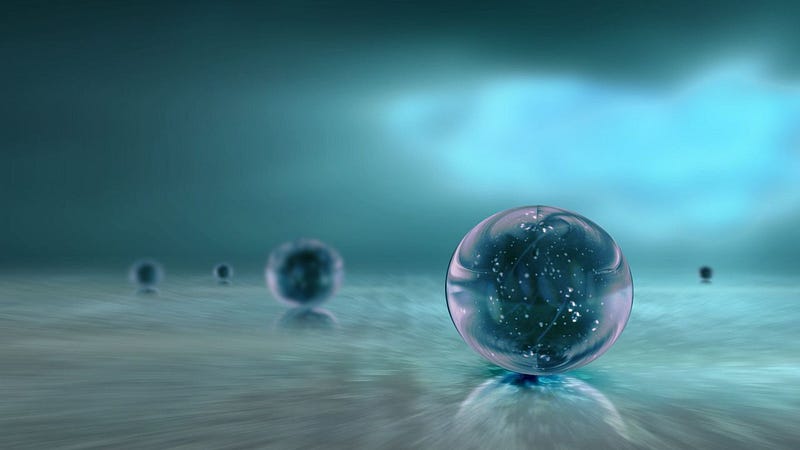
You see, the way inflation works is by causing space to expand at an exponential rate. This takes whatever existed before the hot Big Bang and made it much, much, much larger than it was previously. So far, so good: this explains how we get such a uniform, large Universe. When inflation ends, that Universe gets filled with matter and radiation, which is what we see as the hot Big Bang. But here’s where it gets weird.
According to the viable mechanisms that give us enough inflation to produce the Universe we see, there are also many regions of space surrounding our own (where inflation did end) where inflation doesn’t end right away, leading to a phenomenon known as eternal inflation.
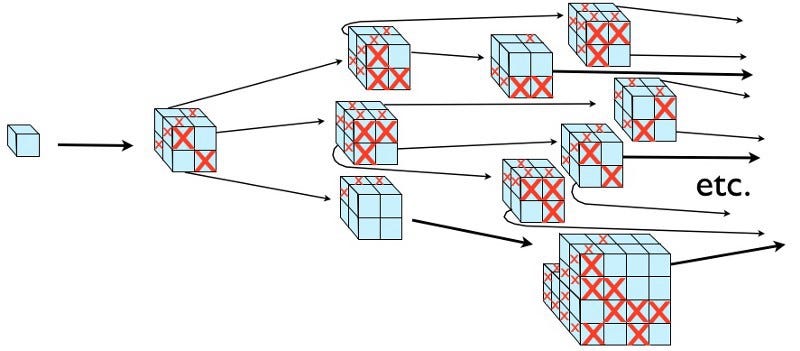
Thanks to quantum mechanics, inflation has a chance of ending in any region at any time… but it also has a finite chance of not ending in any given region at any time as well. Where inflation ends, we get a hot Big Bang and a Universe — of which we can observe part of the one we’re in — very much like our own. (Denoted by the red “X” above.)
But where inflation doesn’t end, that produces more inflating space, which gives rise to some regions that will have hot Big Bangs causally disconnected from our own, and other regions that will continue to inflate.
And so on.
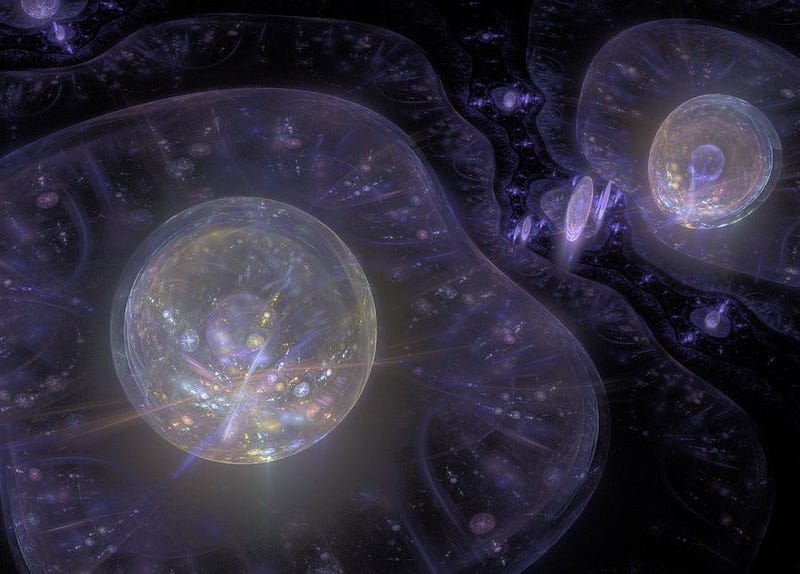
Now there’s a whole lot we don’t know about those other Universes, including:
- Do they have the same physical laws, particles, and fundamental constants as our own?
- Do they have similar densities, properties histories to our own?
- Are we in some way entangled, quantum mechanically, with these other Universes?
The answer may be “no” or “yes” to any or all of these questions; the conservative assumption is that the answers are “yes” “yes” and “no” respectively, but this brings us to the main point of John’s question: is this a scientific theory?
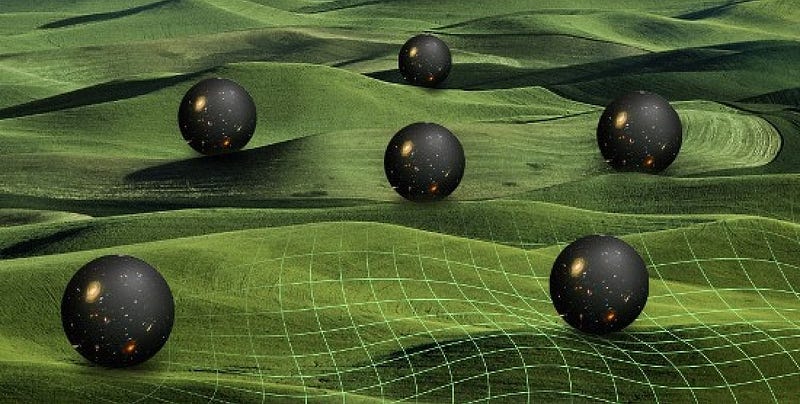
The thing is, the Multiverse is not a scientific theory on its own. Rather, it’s a theoretical consequence of the laws of physics as they’re best understood today. It’s perhaps even an inevitable consequence of those laws: if you have an inflationary Universe governed by quantum physics, this is something you’re pretty much bound to wind up with.
But the Multiverse isn’t necessary to explain anything about the Universe we live in. It solves none of the outstanding problems that we presently have. (And if you say things like “landscape,” “vacuum energy,” “anthropic principle” and “cosmological constant,” you don’t understand what “solve” means.) And worst off, it makes no concrete predictions for something we can necessarily observe.
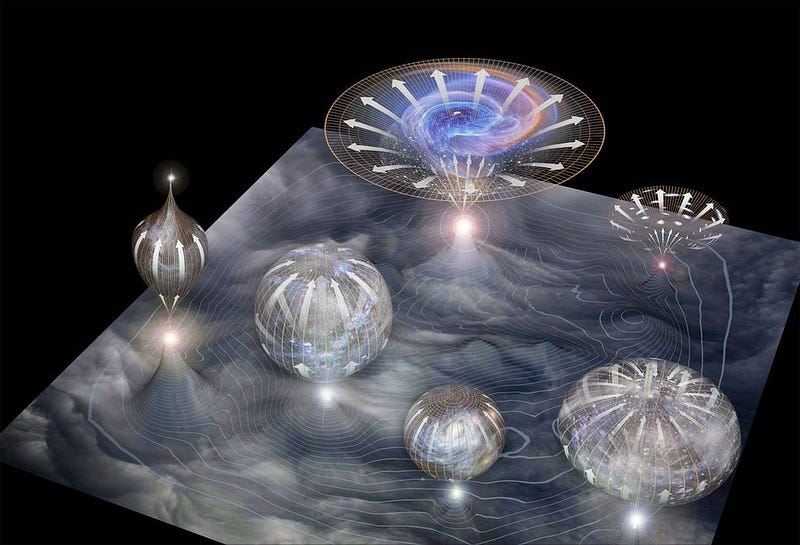
So what does that mean, when we put it all together? It means that the Multiverse — assuming that our current picture of the Universe and its history is valid — is probably real. There probably is much more Universe out there beyond what’s observable to us, and there probably are other Universes that began with other Big Bang that will never interact with our own.
But it also means it’s beyond the realm of testability, even in principle. The only way I could conceive of doing it is catastrophic: to restore the inflationary state, entangle multiple observers that get stretched into different inflating regions, and see if inflation ends and gives rise to different things at different times, presuming you can learn something when you break the quantum entanglement. (And I’m not sure you can.)
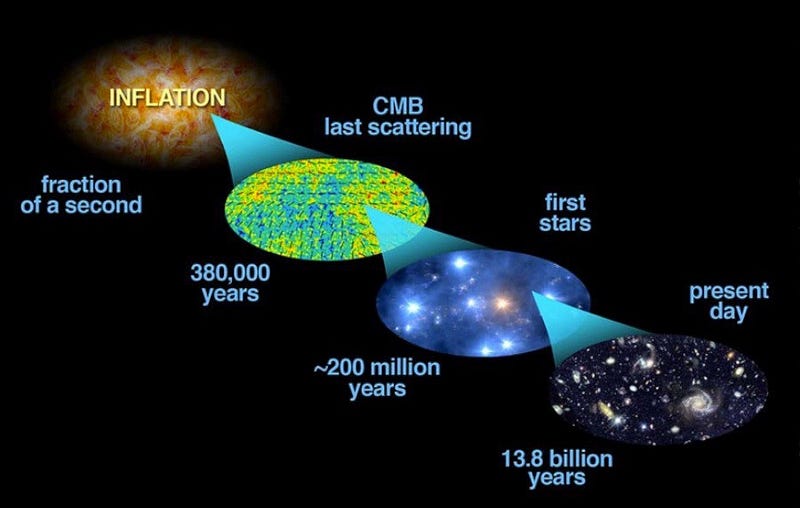
This necessitates surviving a hot Big Bang, mind you, so good luck with that. Unless you can, I’m with John on the skeptical front: the Multiverse may be interesting and a seemingly inevitable theoretical consequence of physics. But until we can test it scientifically — and it may be that we never can — it is not quite good enough to be science. It’s a theoretical conjecture, one that makes sense, but it isn’t a scientific theory, and thanks to the limitations of the Universe, it may never be.
What is it, then? It may be a new class of topics that we’re coming to understand: the first physically motivated “metaphysics” we’ve ever encountered. For the first time, we’re understanding the limits of our Universe, the information in it and what that means for what we can learn about it. Beyond that? After that? Perhaps that’s truly where metaphysics begins, and perhaps that’s where the Multiverse will forever reside.
So thanks for a philosophy-laden question this week, John, and I hope you enjoyed your Ask Ethan!
Have a question or suggestion for Ask Ethan? Submit it here for our consideration.
Leave your comments at our forum, and support Starts With A Bang on Patreon!





